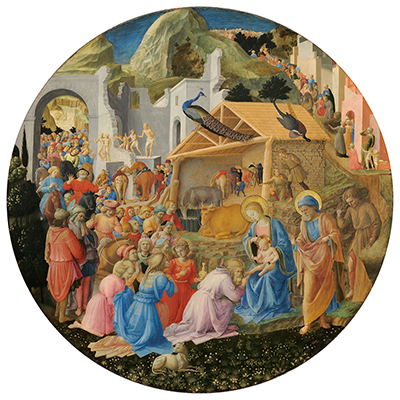 Buy Art Prints Now
Buy Art Prints Nowfrom Amazon
* As an Amazon Associate, and partner with Google Adsense and Ezoic, I earn from qualifying purchases.
Adoration of the Magi is a rare tondo from the career of Renaissance artist, Fra Angelico
This key theme from Christian teachings has been covered by many of the great Renaissance artists but this artwork is actually believed to have been a collaboration between Fra Angelico and his equally talented colleague, Filippo Lippi. Despite both artists being incredibly productive during their lives, they still found time to meet and work with other famous names in order to continue to develop their own work.
Tondos are essentially standard paintings produced on circular canvases, boards or panels. They were particularly common during the Renaissance era but much less so in more recent centuries. They present different challenges and opportunities to artists, with extra consideration being needed for how the background detail around the curved edges is fitted in to the composition.
A date of somewhere around the mid-15th century has been attributed to this piece, with the first documentation of it appearing in 1492. The usual use of blue can be found here, as is Fra Angelico's style of portraiture. It is hard to decipher which artist produced which parts of the scene with any certainty, with the painting probably too fragile to consider using the scientific techniques required to delve deeper into the artwork's history.
Famous paintings have sometimes received nicknames that simply describe their location or ownership and this tondo has sometimes been called the Washington Tondo because of it's location in the National Gallery of Art in Washington D.C. It sits alongside work by related artists such as Duccio, Sandro Botticelli, Giorgione, Eugene Delacroix, Matthias Grünewald, Cranach the Elder amd Giovanni Bellini.



